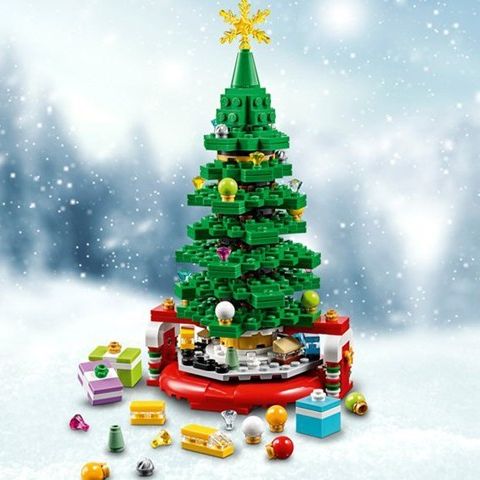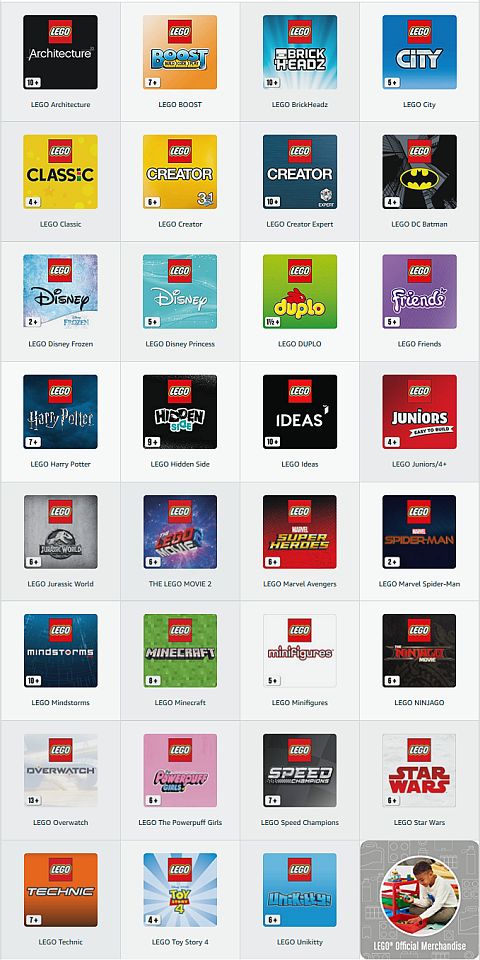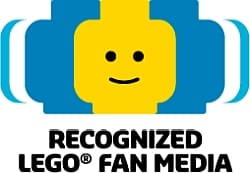December is usually a busy month for LEGO fans. The holiday break and colder weather means more indoor activities, including LEGO building time! And, if we were really good all year, Santa may even bring us some new LEGO sets to build! To help make LEGO dreams come true, the LEGO Group and LEGO retailers continue to offer various promotions up to Christmas, then run clearance sales after the holidays. So, let’s take a look.

➡ FREE EXCLUSIVE LEGO MINI GINGERBREAD HOUSE: Between December 6th and December 24th, you can get the free exclusive #40337 LEGO Mini Gingerbread House with purchases of $99 or more. This is a lovely mini version of the #10267 LEGO Winter Village Gingerbread House, the latest set in the LEGO Winter Village series. Purchasing the set would qualify you for the mini version, but of course you can also buy other sets instead. Valid at official LEGO stores and the Online LEGO Shop.
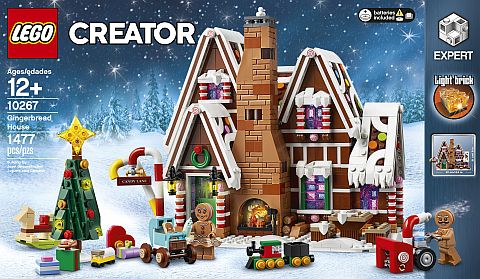
➡ FREE LEGO COLLECTIBLE OBI-WAN KENOBI MINIFIG: Between December 6th and January 1st, you can get the free collectible #30624 LEGO Star Wars Obi-Wan Kenobi Minifigure with LEGO Star Wars purchases of $40 or more. This offer is also valid at official LEGO stores and the Online LEGO Shop.

➡ FREE EXCLUSIVE MINI BATMOBILE: Until December 5th, you can get the free exclusive #40433 LEGO Mini 1989 Batmobile with the purchase of the #76139 LEGO 1989 Batmobile. This offer is also valid at official LEGO stores and the Online LEGO Shop.
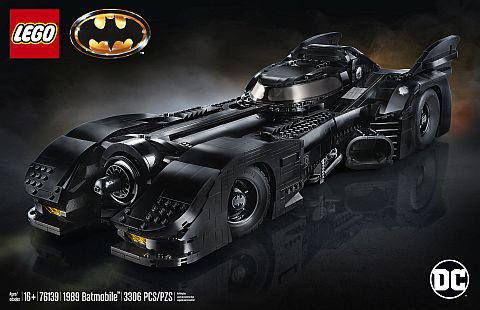
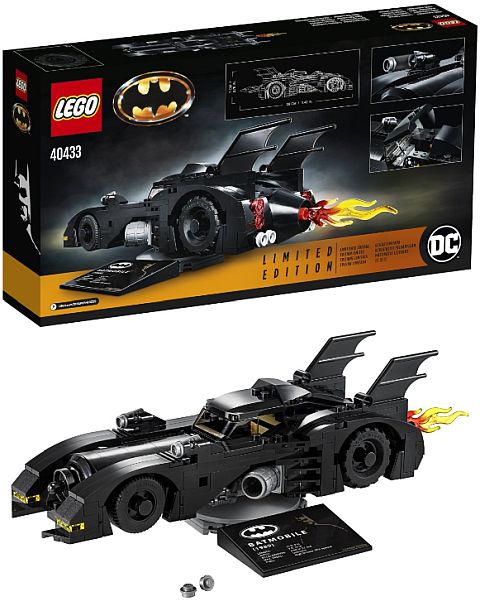
➡ LEGO BUILD TO GIVE CAMPAIGN: LEGO is continuing the Build to Give campaign we talked about previously. You can go into your nearest LEGO store to build and display an ornament (or build at home), and share your creation with friends online with the #BUILDTOGIVE hastag. For every ornament built and shared, LEGO will donate a set to a child in need. Their target is one million LEGO sets.

➡ LEGO HOLIDAY GIFT SHOP: As we discussed previously, the online LEGO Holiday Gift Shop has been open since last month. This is a special section of the Online LEGO Shop, which helps guide those who are purchasing gift items. Experienced LEGO fans may not need this section, but those who are not as familiar with current LEGO sets and themes, could greatly benefit from it. It has a section for the hottest gifts and exclusives like the #71044 LEGO Disney Train and Station, the #21319 LEGO Ideas Central Perk set, the #21318 LEGO Ideas Tree House, the #10267 LEGO Creator Gingerbread House, and more. The LEGO Holiday Gift Shop also has quick-links to current LEGO promotions, the sales page, and stocking stuffers (popular sets under $20). Again, this is a great page to direct those who would like to shop for Christmas but need a little help with making a selection.

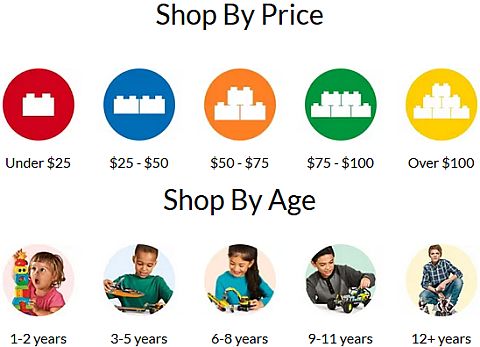
➡ RECENTLY RELEASED EXCLUSIVE SETS: We will talk about smaller gift items a bit later, but for now, here is a list of some of the most desirable LEGO sets released in the last couple of months. The #75252 LEGO Star Wars Ultimate Collector Series Imperial Star Destroyer is the largest LEGO Star Wars set to date. The #42110 LEGO Technic Land Rover Defender, and the #42100 LEGO Technic Liebherr R 9800 Excavator are two impressive sets that are also challenging to build. The #71044 LEGO Disney Train and Station comes with a fully motorized train. The #10269 LEGO Creator Expert Harley-Davidson Fat Boy and the #10265 LEGO Creator Ford Mustang would make great gifts for car and motorcycle fans. The #21318 LEGO Ideas Treehouse looks beautiful on display, and can be changed to fall colors to match the season. The #75936 LEGO Jurassic Park: T. Rex Rampage and the #21320 LEGO Ideas Dinosaur Fossils set are perfect for dinosaur fans. And the #10267 LEGO Winter Village Gingerbread House is the latest in the LEGO Winter Village series. You can find them all at the New tab of the Online LEGO Shop. Also, check the Sale section of the Online LEGO Shop for sets currently at 20-30% discount.
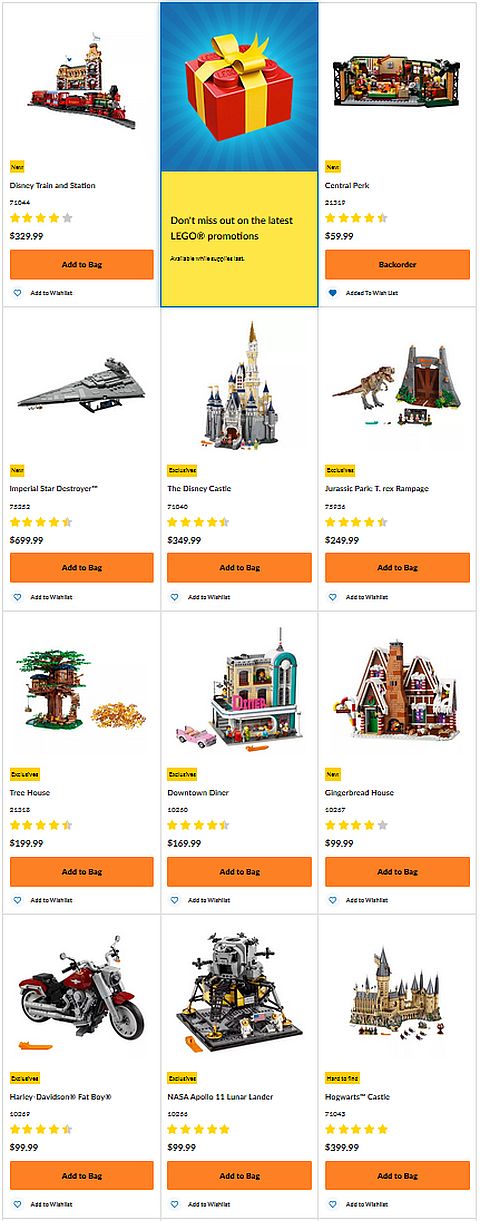
Also keep in mind that if you’re shopping at the Online LEGO Shop for Christmas and you want to make sure your package arrives on time, the cutoff date and time to place an order is December 20th, 12 PM EST. What do you think? What’s on your Christmas shopping list? Are you planning to get anything this month? Feel free to share your thoughts and discuss in the comment section below!
And you might also like to check out the following related posts:
- November 2019 – New LEGO Sets & Promotions
- LEGO Sets on Sale, Retiring & Double VIP Points
- 2020 LEGO Sets & LEGO VIP Specials
- LEGO Star Wars Imperial Star Destroyer (press-release)
- New LEGO Ideas Sets Designer-Videos
- 2020 LEGO Chinese New Year Sets Coming!
- LEGO Originals Wooden Minifigure & More!
➡ LEGO SHOP IN USA: Online LEGO Shop USA
➡ LEGO SHOP IN CANADA: Online LEGO Shop Canada
➡ LEGO SHOP IN UK: Online LEGO Shop UK




